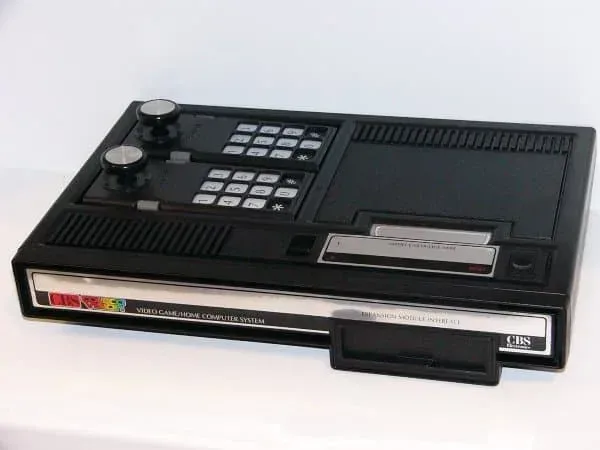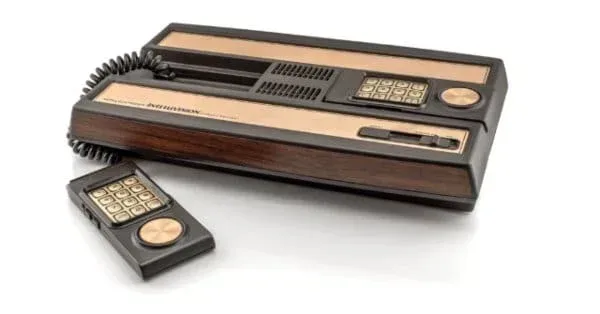
The 1980s were a fun and prolific period when video game consoles are concerned. Although the best-known manufacturer from the era is Nintendo, Nintendo’s consoles, which came out before the PlayStation and the Xbox, aren’t the only ones from that period. In reality, a lot of manufacturers produced different gaming consoles during the 1980s and the market was quite diverse at the time. Although a lot of these consoles failed to withstand the test of time, this does not mean that we can simply forget about them! That is why I have decided to dedicate today’s article to two such consoles.
Although the consoles are very similar, in terms of hardware, the original ColecoVision was superior to the original Intellivision. Ultimately, it all came down to what kind of games the player preferred.
In today’s article, I am going to introduce you to the ColecoVision and Intellivision consoles. You’re going to find out the difference between these two consoles, whether you could play games for one console on the other and how much these consoles are worth today, 40 years after their premiere release. I have prepared a very informative article for you today so enjoy!
The differences between ColecoVision and Intellivision
In this section, I am going to introduce you to the two consoles, their history, and their functionality. By giving you information on each of the consoles, you are going to be able to identify the differences.
The ColecoVision was the first game console that could reproduce the arcade hits of the time almost true to the original in terms of graphics and sound. This was due to the hardware similarity of the ColecoVision with the arcade technology of the time; on the Atari 2600, Intellivision, and Philips G7000 this was only possible with major compromises, not only graphically and sonically, but often also in gameplay and level structure.
The steering wheel with pedals (turbo) offered for the ColecoVision was also a sensation at the time, as a comparable version was not available for home use until then.
In terms of hardware, the ColecoVision technology is similar to that of the later published MSX home computer standard, but without being compatible with it. The included controller (joystick) with spiral cable and an additional number pad found space in the housing and ideally was always tidy when not in use. Something similar already existed with the Intellivision console or the Interton VC 4000, and some first-generation TV video games (pong consoles with permanently installed games) already had this.
While Atari had achieved the breakthrough with the popularity of Space Invaders, the ColecoVision was the first home console on which the cult game Donkey Kong from Nintendo could be played. Another game hit was the game Zaxxon, which was very well ported from the arcade machine to the ColecoVision console.
The Intellivision was developed by the Mattel Electronics division, which was founded to develop electronic games. In 1979 the device and four associated games were launched in Fresno to test its marketability.
Intellivision was the first serious threat to Atari’s dominance in the video game market. Soon, Atari’s third party developers Activision, Coleco, and Imagic began releasing games for Intellivision.
In response to its success, Mattel introduced a new peripheral, the Intellivoice. This device was used to output speech in connection with certain games. Mattel caused a stir with the announcement of a computer keyboard. A new computer upgrade, the Entertainment Computer System (ECS), was significantly smaller and easier to produce than the original keyboard. The two devices were incompatible, but owners of the old version could trade in their keyboards for the new model.
At the same time as the ECS, the Intellivision II with detachable gamepads and a new design was released in 1983, as well as the system changer for playing Atari 2600 games with the Intellivision and a keyboard extension for the ECS.
After all, Intellivision II copies were sold out, a new console was released, the INTV III. It was a variant of the Intellivision in a new design, which was later renamed the Super Pro System.
As you can see, both these consoles had an impact on the 1980s gaming industry, but they ultimately failed to catch up to their competition. The two consoles were very similar in most aspects and the main difference were the games, i.e., what kind of games you liked, as ColecoVision was best suited for arcade games. Also, ColecoVision, in my opinion, had better graphics than Intellivision.

Do ColecoVision games work on Intellivision?
This is a question whose answer really depended on which market you came from, as there was no universal rule. What I do know is that ColecoVision games were manufactured to work on your Intellivision II, which also adds to the above conclusion that the two consoles were very, very similar.
Intellivision II was a better console and it caught up to the graphical and hardware standards of the ColecoVision, which was, as I have said, superior to the original Intellivision. It doesn’t seem like all of the games were interchangeable, especially for the original Intellivision, but these issues were fixed later on and some games could be played on both consoles.
How much is a ColecoVision worth?
The ColecoVision was among the cheaper consoles you could get back in 1982, when it first hit stores. It was sold for $175, which, although pricey for the time, was cheaper than every console except the practically forgotten Magnavox Odyssey, which sold for $99.
Now, since it’s not 1982 anymore, you might be interested in the current price of this console. A used console in good condition can be bought for around $200, while a new console can cost from $500 to $1,000, depending on the seller.
How much is Intellivision worth?
As far as the Intellivision is concerned, it was significantly more expensive when it came out in 1980, going for a total of $299, which is comparable to some modern-day consoles.
Today, the devices usually go for around $100 – Intellivision, Intellivision II, and III – when used, but in good condition, a new console in mint condition, could go for as high as $900.
